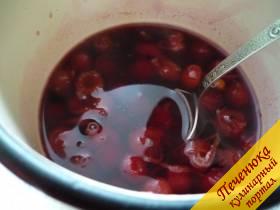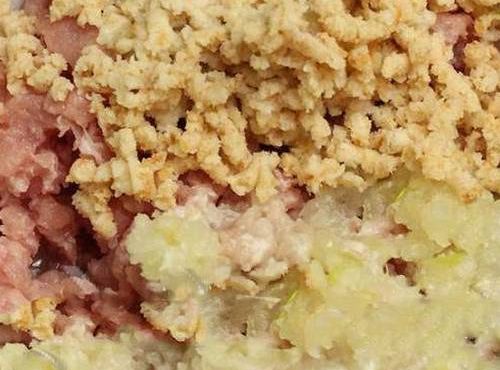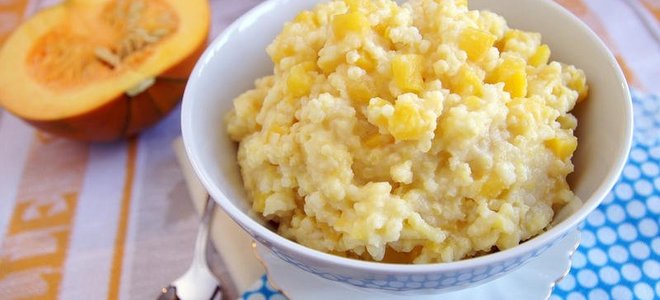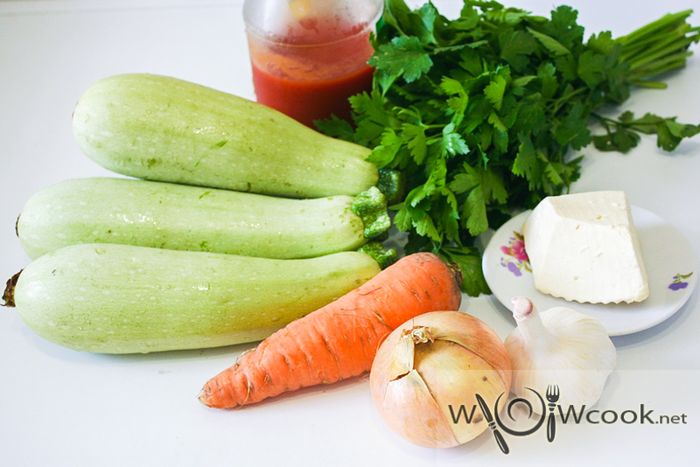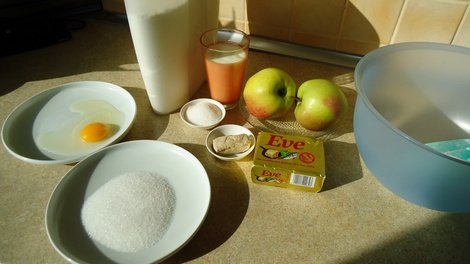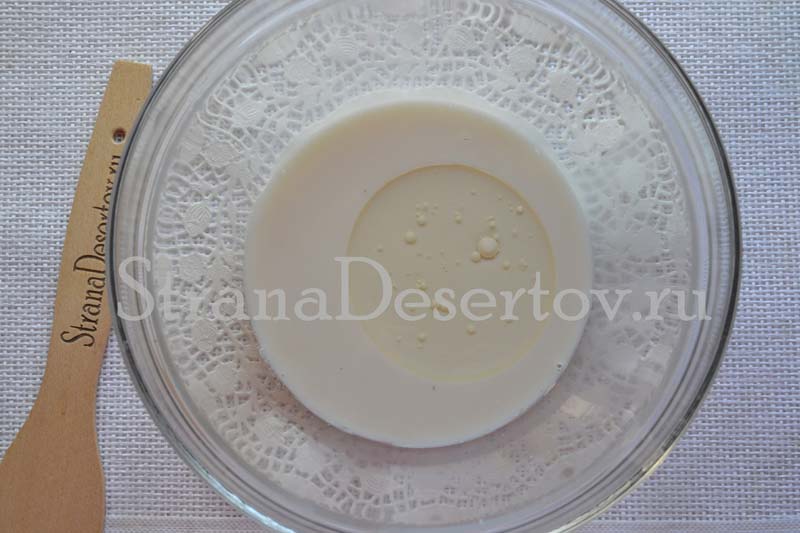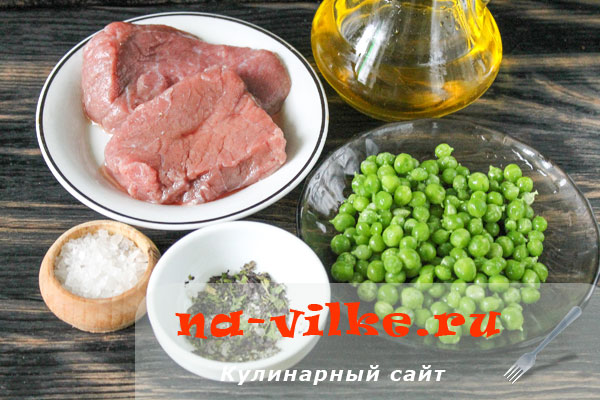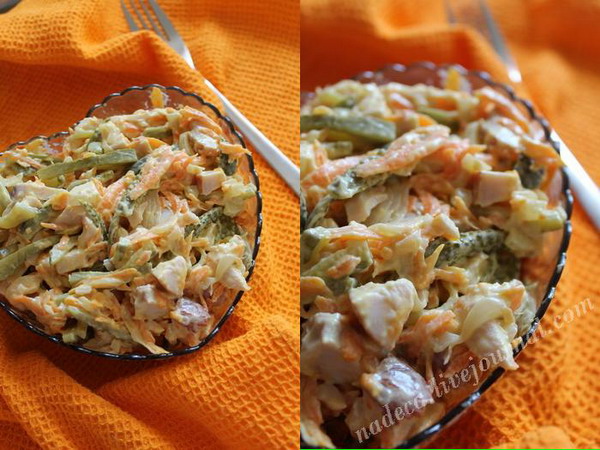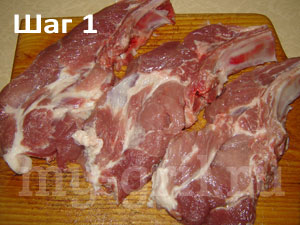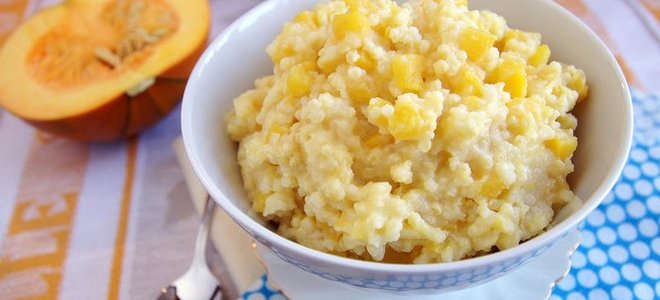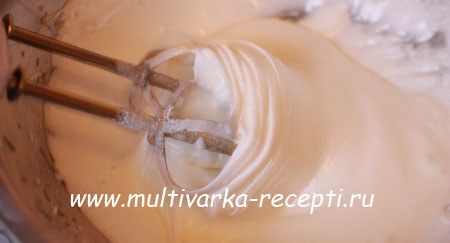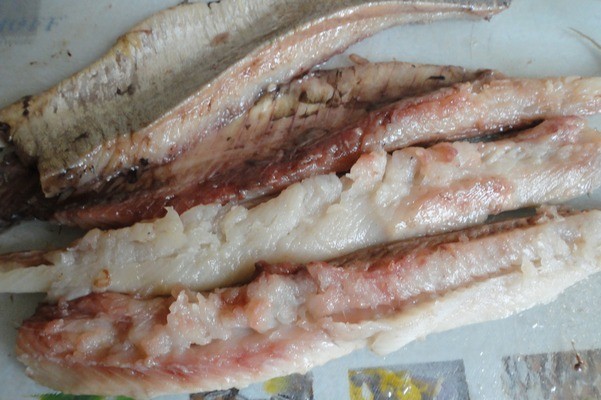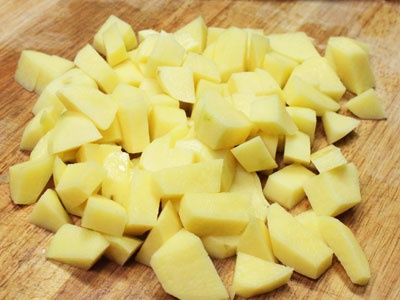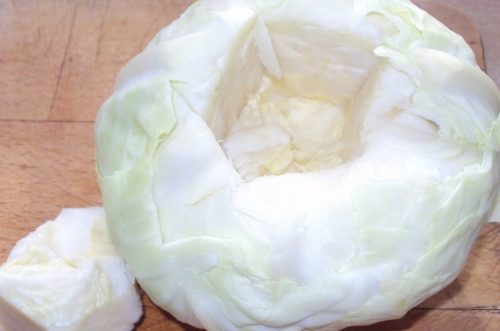Mangosteen is a unique tropical fruit with healing properties. Fruit mangosteen - useful properties and contraindications, how to eat
Mangosteen is also known in narrow circles as the purple mangosteen. This tropical evergreen tree first appeared, according to many scientists, in the Sunda Islands and the Moluccas of Indonesia. It grows now mainly in Southeast Asia, as well as in the tropical countries of South America: Colombia, in the state of Kerala in India, in Puerto Rico and Hawaii, where the tree was imported. It can reach 25 meters in height, although there are relatively small trees, for example, 6 meters high. Unusual exotic fruit mangosteen is very sweet and spicy, its flesh is juicy and slightly fibrous with vesicle liquid (as in citrus fruits). The inedible peel of the fetus has a red-violet hue during the ripening period. Fruit seeds are almond-shaped and small in size. Purple mangosteen belongs to the same species as other, but less well-known mangosteen, such as the button mangosteen or mangosteen madruno. Growing it at home requires a reverent approach to choosing a place of growth and compliance with the rules of care. The article tells about how to eat fruit and in what variations it can be used. In the meantime, look at the mangosteen fruit in a photo illustrating the external attractiveness of a powerful plant: 

Get to know a tropical stranger in the photo
As we said earlier, the homeland of mangosteen is the Sunda Islands and the islands of Indonesia. Since ancient times, the tree has been bred in the Philippines, Java, Sumatra and mainland Southeast Asia. The tree and its fruit are highly regarded in the market for their delicate texture and slightly sweet-sour taste. Let's get to know this tropical stranger better. Look at the mangosteen in the photo, it allows you to imagine yourself this is an unusual fruit:
 The description of mangosteen was first included in Linnaeus' book “Species Plantarum” in 1753. In Russia, the tree was first grown in a greenhouse in 1855. Subsequently, the culture of this tree was introduced in the Western Hemisphere, where it established itself in the West Indies, especially in Jamaica. Later, culture established itself on the continents of America, and later in Guatemala, Honduras, Panama and Ecuador. A tree never grows far from the tropics. Due to the long fruiting period and the long-term result of the selection of cycles, mangosteen is not recognized as the best option for studies that can increase the productivity of the tree.
The description of mangosteen was first included in Linnaeus' book “Species Plantarum” in 1753. In Russia, the tree was first grown in a greenhouse in 1855. Subsequently, the culture of this tree was introduced in the Western Hemisphere, where it established itself in the West Indies, especially in Jamaica. Later, culture established itself on the continents of America, and later in Guatemala, Honduras, Panama and Ecuador. A tree never grows far from the tropics. Due to the long fruiting period and the long-term result of the selection of cycles, mangosteen is not recognized as the best option for studies that can increase the productivity of the tree. 


Propagation and cultivation of mangosteen at home
Mangosteen is often propagated using seedlings. The vegetative propagation method is difficult, unlike the first method. Seedlings are not only a reliable method, but they bear fruit earlier than plants propagated by the vegetative method. The plant produces recalcified seeds - these are not seeds in the usual understanding of botany, but like an egg of an asexual embryo. Seed formation does not imply any fertilization, therefore, the seedling is genetically identical to the mother plant. If the plant dries, then the seeds die very quickly. But if the seeds are wet during propagation, then after 2-3 weeks the seeds will begin to germinate. After that, the plant can be kept in a pot nursery for 2-3 years. Growing mangosteen at home requires a lot of experience and tremendous knowledge from the grower. As soon as the tree reaches 25-30 centimeters, they are transplanted into the garden or other open space at a distance of 20-40 centimeters from each other. Transplanting is always done during the rainy season, as young trees need shade - most effective are coconut and banana trees, rambutan and durian. Another advantage of growing other crops near the mangosteen is that they suppress weeds. The mangosteen fruit initially appears in the form of a pale green or almost white product. Over time, the fetus increases - it takes about 3-4 months, and the color deepens to dark green. During this period, the fruit grows in size until its size is 6-8 centimeters in diameter from the outside to the final ripening stage. Tree-plant growth slows down if the room temperature drops below 20 degrees Celsius. The ideal temperature range for it is from 25 to 30 degrees, with an air humidity of 80% - 38-40 degrees. The lowest possible temperature is 3-5 degrees. and young and adult trees tolerate shade well. Mangosteen trees have a weak root system and prefer deep, well-drained soil with a high moisture content, which is why in the natural environment they grow near large and not very rivers. The plant is not intended for calcareous soils with a low content of organic substances. A tree needs a climate with a good distribution of rainfall throughout the year (< 40 мм/месяц) и 3-5 недель сухого сезона. Оно чувствительно к водообеспеченности и применению удобрения, количество которого увеличивается с возрастом дерева (вне зависимости региона нахождения). В первые пять лет после прорастания мангостин очень чувствителен к засухе, поэтому ему необходим корневой запас, в том числе и для лучшего развития в первые годы роста. Постоянная форма кроны дерева – это пирамида.
Tree-plant growth slows down if the room temperature drops below 20 degrees Celsius. The ideal temperature range for it is from 25 to 30 degrees, with an air humidity of 80% - 38-40 degrees. The lowest possible temperature is 3-5 degrees. and young and adult trees tolerate shade well. Mangosteen trees have a weak root system and prefer deep, well-drained soil with a high moisture content, which is why in the natural environment they grow near large and not very rivers. The plant is not intended for calcareous soils with a low content of organic substances. A tree needs a climate with a good distribution of rainfall throughout the year (< 40 мм/месяц) и 3-5 недель сухого сезона. Оно чувствительно к водообеспеченности и применению удобрения, количество которого увеличивается с возрастом дерева (вне зависимости региона нахождения). В первые пять лет после прорастания мангостин очень чувствителен к засухе, поэтому ему необходим корневой запас, в том числе и для лучшего развития в первые годы роста. Постоянная форма кроны дерева – это пирамида.

 Mangosteen seeds lose their germination very quickly, so at home it is necessary to prepare them for planting after 4-5 weeks, after the fruit was removed from the tree. The following method slightly increases the term of seed productivity: you need to wrap them in moist moss or fiber. Before planting in a pot, carefully prepare the drainage and soil mixture with peat. Seeds are placed to a depth of two centimeters and slightly moistened, after which the container is closed with a film. Seeds are best planted previously in special boxes for seedlings, and only then placed in pots. After that, they can already be planted in a permanent container. Be prepared for the fact that the first shoots appear only after 1-1.5 months. Mangosteen is a slowly growing tree, so it will reach its height of 25-30 centimeters only after 2 years, no less. The fruits will appear only after 10 years. The soil should not be wet, but it should almost always remain moist; water the plant often - but not abundantly. The plant dies at temperatures below 4 degrees and above 37.
Mangosteen seeds lose their germination very quickly, so at home it is necessary to prepare them for planting after 4-5 weeks, after the fruit was removed from the tree. The following method slightly increases the term of seed productivity: you need to wrap them in moist moss or fiber. Before planting in a pot, carefully prepare the drainage and soil mixture with peat. Seeds are placed to a depth of two centimeters and slightly moistened, after which the container is closed with a film. Seeds are best planted previously in special boxes for seedlings, and only then placed in pots. After that, they can already be planted in a permanent container. Be prepared for the fact that the first shoots appear only after 1-1.5 months. Mangosteen is a slowly growing tree, so it will reach its height of 25-30 centimeters only after 2 years, no less. The fruits will appear only after 10 years. The soil should not be wet, but it should almost always remain moist; water the plant often - but not abundantly. The plant dies at temperatures below 4 degrees and above 37. 

Fruit mangosteen - how to eat and use it
Ripening of fruits on a tree takes at least 5-6 months, after which they turn purple. The quality of the fruit, including its bitter taste, is due to changes in the pulp or around the fruit tree (it can crack as a result of excessive absorption of water). The mangosteen tree first bears fruit for 5-6 years, but it happens after only 8-10 years. Its productivity depends on the climate and age of the tree. If the young tree is planted for the first time, then the probable productivity is 200-300 fruits, while at the end of the term - 500 fruits per season on average. Mature trees, aged 35 to 40 years, can produce up to 3 thousand fruits. Even old trees, which are already more than a hundred years old, still maintain their yields at a high level.

 The main amount of mangosteen is produced on the territory of Southeast Asia, mainly in Thailand as the country with the largest sown fields: 4 thousand hectares in 1965 and 11 thousand hectares in 2000, which in total gives a profitability of 46 thousand tons. Indonesia, Malaysia and the Philippines are other major producers. As we have already said, the peel of mangosteen is inedible, in contrast to the pulp, which is also divided into 4-8 slices. Fruit can be eaten both fresh and canned. How mangosteen is eaten depends on the use of the pulp. You need to select only those fruits that are missed when pressed. Otherwise, you risk consuming an already spoiled product. First of all, the fruit needs to be peeled - remove the green top and click on the middle, after which the fruit is easily opened into two parts. After that, eating it is very convenient and pleasant. Mostly fruit is consumed fresh - squeezed juice, used as an ingredient in salads, milkshakes, soufflé and toppings for pies and cakes, it is used even in fish sauce. By the way, the refined sweet and sour taste of mangosteen is harmoniously combined with seafood, especially shrimp and squid. To achieve the original taste of yogurt, ice cream or kefir, you just need to cut the fruit into pieces and add to the product.
The main amount of mangosteen is produced on the territory of Southeast Asia, mainly in Thailand as the country with the largest sown fields: 4 thousand hectares in 1965 and 11 thousand hectares in 2000, which in total gives a profitability of 46 thousand tons. Indonesia, Malaysia and the Philippines are other major producers. As we have already said, the peel of mangosteen is inedible, in contrast to the pulp, which is also divided into 4-8 slices. Fruit can be eaten both fresh and canned. How mangosteen is eaten depends on the use of the pulp. You need to select only those fruits that are missed when pressed. Otherwise, you risk consuming an already spoiled product. First of all, the fruit needs to be peeled - remove the green top and click on the middle, after which the fruit is easily opened into two parts. After that, eating it is very convenient and pleasant. Mostly fruit is consumed fresh - squeezed juice, used as an ingredient in salads, milkshakes, soufflé and toppings for pies and cakes, it is used even in fish sauce. By the way, the refined sweet and sour taste of mangosteen is harmoniously combined with seafood, especially shrimp and squid. To achieve the original taste of yogurt, ice cream or kefir, you just need to cut the fruit into pieces and add to the product. This name is rarely seen on the shelves of domestic stores. The exotic fruit mangosteen has specific characteristics, a peculiar appearance and a unique geographical location. What determines the popularity of an unusual fruit can be found in this article.
Fruit mangosteen has gained its popularity due to the abundance of useful properties for various spheres of human activity. It is often used in Thai cosmetics. It is quite difficult to buy fruit in domestic stores, as it is not common in our territories due to difficulties in transportation and storage.
What does a mangosteen look like?

Mangosteen - A tropical tree that preserves green throughout life. Its maximum height is 25 meters. The upper part of the plant retains the shape of a pyramid. Bark - black and brown. Young leaves have a pink color, and formed - completely dark green. The shade on the front side is darker than on the inside. The maximum leaf length is 25 centimeters.
 During flowering, the plant is covered with red petals of a dense structure. It prefers to grow in a humid hot climate. Inside is a white core, commensurate with the head of garlic.
During flowering, the plant is covered with red petals of a dense structure. It prefers to grow in a humid hot climate. Inside is a white core, commensurate with the head of garlic.
The diameter of the fruit can reach 8 centimeters. The plant contains many segments. This is evidenced by external signs in the form of petals on the fruit.
The treatment is widely known in Thailand. However, its geographical roots could not be established to date, but it is definitely known that this is Southeast Asia. Over time, the plant spread throughout the globe, winning the hearts of people with its taste and healing properties.
Nutritional value
Mangosteen is an excellent natural antioxidant. Due to which it is often used in the preparation of syrups for weight loss. In its composition, you can find many useful substances that have a beneficial effect. The most sought after:
- Vitamin complexes of groups B, A and C. The latter is contained in record quantities.
- Potassium. One fruit contains no more than 50 milligrams.
- Magnesium. Approximately 14 grams in the pulp of the fetus.
- Copper. It occupies about 7% of the total mass.
- Phosphorus. The necessary element can be found in the amount of 7 grams.
- Calcium. Not more than 6 milligrams per hundred grams of pulp.
- Iron. Minimum content relative to similar fruits.
- Zinc. The number of content is also not large.
- Manganese. One tenth of a milligram is contained in one fruit.
- Xanthones. Contained in the peel and pulp, positively affect the whole body.

All of the above trace elements contribute to the proper functioning of the body's immune system. If it is not possible to eat fruit in its raw form, then it is allowed to replace it with delicious juice. It contains identical beneficial trace elements.
 The drug Mangosteen is considered a good alternative to natural fruit for residents of middle latitudes, as it has identical properties.
The drug Mangosteen is considered a good alternative to natural fruit for residents of middle latitudes, as it has identical properties.
The peel of mangosteen is actively used in treatment. It helps to lose weight, as evidenced by the numerous reviews of doctors and users.
Healing properties
Mangosteen syrup for weight loss is known for its abundance of beneficial properties. The components contained in the fruit are preserved during the manufacture of the medicine. Mangosteen has been used extensively for decades around the world as an alternative to official medical supplies.
Able to harm a person as well as benefit. To avoid negative side effects, before using it, you need to familiarize yourself with the composition.
Exotic fruit has the following actions:

- stimulates the immune system, increasing the quality of the lymphatic system;
- saturates the body: using it, a person receives many different useful substances;
- increases resistance to various external irritants;
- reduces the likelihood of progression of inflammatory signs, prevents the development of many diseases that manifest with age;
- reduces the intensity of the manifestation of signs of incompatibility at conception;
- it has an antifungal and antibacterial effect, preserving the original human genome;
- it is an antioxidant that stimulates the production of substances responsible for tissue rejuvenation;
- forces cancer cells to self-destruct;
- normalizes the body's work - mangkut increases the metabolic rate, which allows you to remove toxins and toxins from the body.
The pulp of the plant helps to eliminate the appearance of various ailments. The beneficial properties of mangosteen affect the following body systems:

- The cardiovascular system. Improves blood circulation and blood coagulation.
- Nervous system. Eliminates impaired transmission of impulses from the brain to the nerve endings, reduces increased excitability and regular headaches.
- Digestive system. Stabilizes the production of enzymes in the gastrointestinal tract. It eliminates excess weight by reducing hunger, saturating with a large number of micronutrients.
- Endocrine system. Increases hormone production.
How to clean and eat mangosteen
To properly peel an exotic fruit, you need to observe a number of nuances, which are described below:

- With maximum ripeness, tear off the upper leaves and tear off the upper part of the fruit, tearing the peel.
- If the peel does not burst with light pressure, it is advisable to use a knife.
- It is necessary to get the central part, making a circular incision of small depth.
- Mangosteen have a dense skin, which often affects the sliding of the knife, so you should be careful.
It’s hard enough to describe the taste of the plant: this is a game of sweet and sour. Mangosteen is supplied to the domestic market in dry, frozen and raw form. It is eaten in several ways.
 The most popular are listed below:
The most popular are listed below:
- cocktail dressing;
- addition to the test;
- making jam;
- roasting;
- in combination with various seafood;
- preparation of juice in combination with nectars of other fruits.
Video: How to eat Mangosteen
| RATING | |
| Efficiency | |
| Availability | |
| Security | |
| TOTAL Mangosteen is an exotic fruit native to Southeast Asia. It is rich in vital vitamins that are beneficial for the circulatory, digestive, circulatory and other body systems. The fruit is used in the preparation of syrups, juice, preserves, as well as drugs for treatment and weight loss. | FINAL RESULT |
Encyclopedia of Medicinal Plants
Photo of a medicinal plant Mangosteen
The beneficial properties of mangosteen
Latin name: Garcinia mangostana.
Family: Guttiferae; St. John's Wort or Clusiaceae: Clusian.
English name: Garcinia, Mangosteen.
Synonyms: Mangosteen, Mangosteen, Garcinia, Mangkut.
Used Parts: fruits (flesh and peel) and bark
Botanical Description: mangosteen tree is a very slowly growing plant with a pyramidal crown. It reaches a height of 6-25 meters; has a dark brown or almost black scaly bark. Inside the bark contains yellow gummy bitter latex (Gummi-resina). The leaves are evergreen, opposite, elliptical, leathery and thin, dark green, slightly shiny, 9-25 cm long. The flowers are fleshy. They are located in groups of 3-9 at the ends of the branches, have four oval petals. The fruit is round in shape, smooth on the outside, the size of a tangerine; dark green to red mauve. The peel is thick, red in section. Inside are from 4 to 8 slices of white juicy pulp. The pulp is famous for being amazingly delicious with the aroma of strawberries and apples.
Habitat: the fruits of mangosteen are among the most delicious in the world, but they cultivate it in limited areas, and especially in Thailand, where a total of more than 9 thousand ha are planted with mangosteen trees. Mangosteen is also grown in the Philippines, Indonesia, and Malaysia. Myanmar, Sri Lanka, Honduras. Farmers growing mangosteen have to be very patient, since the first fruits on the trees appear late, by 9-20 years of life of the tree. The tree gives two crops per year from 70 to 180 kg.
Active substances: mangosteen is very rich in calcium, phosphorus and vitamins B and C. The fruit also contains a large amount of the natural antioxidant xanthonysis. In the bark of the tree and the outer part of the core there are long secretory passages containing orange latex - gum gummi-resina Gutti (Gutti) gum-resin. When dried, these are hard, brittle, cylindrical pieces of orange-yellow color. Gum-resin is used in the manufacture of varnishes, paints.
Useful properties, the use of mangosteen
Mangosteen fruit juice part of a fruit and berry drink Zambrosa produced according to the international GMP quality standard for medicines.
Mangosteen fruit juice is part of the Zambroz fruit and berry energy drink
Exotic fruit mangosteen - has been used in Chinese medicine for thousands of years. Traditionally, mangosteen has been used by the peoples of South Asia to treat infectious diseases, prevent infection, increase energy, and have an anti-inflammatory and analgesic effect. The pulp remaining on the peel is cleaned, boiled and prepared from this healing tea. Alternatively, the flesh of the mangosteen can be baked, then soaked in water and added to mashed potatoes, which should be every two hours. In recent years, it has been shown that this fruit contains schnioxidants (xanthones) that can withstand several types of cancer. In pharmacology, xanthones are used to maintain microbiological balance, maintain joint flexibility, support the health of the immune system and mental health.
Modern scientists have found that the substances contained in the fruit of the mangosteen effectively help in diseases such as leukemia and (research by the International Institute of Biotechnology, Japan 2003.); tuberculosis and salmonellosis (Department of Chemistry, Bangkok University of Thailand, 2003); cancer (School of Medicine, Kaosung College of Medicine, Taiwan, 2002); atherosclerosis (Department of Medicine, Royal Hospital, Australia, 1995) and many other diseases of a viral and infectious nature.
Contraindications. Not detected.
Recently, a new drug has arrived on the dietary market - mangosteen concentrate. The manufacturer of the product claims that this biological supplement helps to lose weight quickly, and you do not need to torment yourself with physical activity or follow strict diets.
What is mangosteen
Exotic fruit grows in tropical countries, while the Malay archipelago is considered the birthplace of the fruit, and it was most widely spread in Thailand. Mangosteen is a sweet fruit with a dark purple hard peel, which has a fleshy, light, juicy pulp in the form of several slices (see photo below). Inside the fetus there are bones that are not eaten, but are sometimes used as a dietary supplement. The fruit is also called mangosteen or mangustin.
The benefits and harms of mangosteen
Mangosteen is a source of beneficial fibers, iron, calcium, cachetins, phosphorus and potassium. In addition, the fruit contains:
- vitamin D
- vitamin A;
- vitamin E
- vitamin C;
- b vitamins
The peel of mangosteen includes phytonutrients, pectins, anthocyanins and bioactive substances that can strengthen the immune system and have a generally positive effect on the human body. The dried product has found application in treating the skin, so the fruit is used against eczema, acne, etc. The beneficial properties of mangosteen are justified by the presence of antioxidants, anti-allergic, anti-inflammatory and antibacterial substances in the fruit juice. Mangosteen can be used as a prophylactic against viral and infectious diseases.
Mangosteen includes 60 types of natural phenolic compounds (xanthones), characterized by a wide range of beneficial properties. Due to this, the use of the fetus helps to eliminate toxins, free radicals and toxic compounds from the body. Fruit seeds are rich in plant nutrients and fatty acids, which positively affects the health of hair, nails, and skin. What other useful properties does mangosteen fruit have:
According to scientific data, the danger of the fruit lies in the fact that xanthones in its composition thin the blood, therefore for those people who have coagulopathy or hemophilia, weight loss with the help of mangosteen is contraindicated. In addition, allergic reactions to mangosteen are common, so drinking juice or the fetus should begin gradually. There is no consensus among doctors regarding whether pregnant women can eat exotic fruit - it is better to ask your doctor about this.

Mangosteen Syrup for Weight Loss
Mangosteen juice is perfect not only for those who want to lose weight, but also for professional athletes, because, eliminating fatty tissue, the product does not inhibit the growth of muscle fibers, but also is a source of energy. Manufacturers are advised to drink syrup for weight loss, even to those who do not set a goal to lose kilograms, but just want to feel good. Mangosteen juice, according to them, helps to recover quickly after operations and serious illnesses.
Doctors' reviews about slimming mangosteen syrup
The benefits of mangosteen are scientifically proven: thanks to its phenolic compounds, the fruit has a positive effect on the immune system, metabolism, and other metabolic processes. The latter explains the ability of the fetus to help in losing weight, however, narrowly focused studies on the effect of mangosteen on the body of obese people have not been conducted.
Reviews of doctors about mangosteen syrup for weight loss indicate its effectiveness in the fight against excess body fat. Despite the fact that the extract from the fetus cannot be classified as a super-effective means for losing weight, but it is also impossible to deny its positive effect on the body of fat people. Manufacturers were able to maintain the benefits of fresh mangosteen and release a bioadditive in an easy-to-use form - this is a big plus.

Slimming mangosteen powder
You can take fruit for weight loss not only in the form of juice, but also in the form of powder from a mangosteen peel. It is prepared as follows: ripened fruits are dried in a vacuum way, then they are ground to a state of fine-grained powder, which ensures the preservation of the beneficial substances of the fetus. According to manufacturers, mangosteen powder for weight loss helps to normalize protein metabolism, accelerate metabolism and remove toxins from the body. It should be taken by mixing with water, tea or natural juice, while in the process of drinking it is necessary to stir the liquid, not allowing the powder to settle on the bottom.
How to take mangosteen for weight loss
Syrup for weight loss should be taken every day before meals, while a single dosage is ½ tsp. Optionally, you can add mangosteen juice to water, dairy products or non-hot tea. The manufacturer advises when you feel hungry (when the main meal is still far away), drink another 1 tsp. means for weight loss. The last juice intake is carried out before bedtime. The course of weight loss lasts a month, before it begins it is better to consult a doctor.
How to take mangosteen for weight loss in powder form? In this case, only the dosage of the drug changes: once take 1-2 tsp. substances for weight loss. At the same time, you can dilute the powder not only in liquids, but also add to cereals, salads, other food. How to eat mangosteen? To lose weight, you need to eat fresh fruits systematically - 2-4 pieces per day. In order to properly clean the fruit, make a circular incision in the center, trying not to touch the white flesh, then open the fruit and eat the mangosteen with a spoon.

The price of mangosteen for weight loss
The cost of this product for weight loss is of interest to those who seek to lose weight through dietary supplements. On the shelves of supermarkets, exotic fruit is difficult to find even in Moscow, and the price of the fruit is high for Russians, so it is more advisable to order syrup or mangosteen powder online from the catalog. Buying a product in an online store is simple - the process will take several minutes, but you should know how to choose a drug so as not to run into low-quality goods. To do this, read the reviews that must be in every online store.
Powder and syrup have a convenient form for use, in addition, they are relatively inexpensive, given the fact that there is enough money for a long time. How much does a mangosteen for weight loss in Moscow:
- the price of syrup is 800-950 rubles;
- the price of powder is 2000-3600 rubles.
Video: slimming mangosteen syrup - real customer reviews
Exotic mangosteen fruits grow in the tropics and are little known in our country. But thanks to its amazing taste and many useful properties, mangosteen deserved attention and reached our country. The birthplace of mangosteen is the Malay archipelago. It was most widely distributed in Thailand and some countries in Southeast Asia. In other countries, individual trees are found only in botanical gardens. A humid equatorial climate is suitable for mangosteen. Mangosteen trees do not tolerate even a short period of drought or winds. And they die already at temperatures below + 5 ° C.
Let's talk about the properties of mangosteen, what is its unique composition and how best to use mangosteen for health.
How to choose the right
The taste of mangosteen is very pleasant and simply can not be compared. Its skin is dark purple, and the flesh is white. The size of the mangosteen is small - with mandarin. This fruit has an exquisite taste and excellent nutritional properties. In addition, it is valued for its high content of xanthones (more on this below). In addition, each serving of this fruit contains five grams of fiber protein. And its dark purple pigment is used as a dye.
The flesh of the mangosteen is under the skin. But it should not be thrown away, because it is on this peel that the maximum amount of its nutrients is accounted for. By the way, it should be used in the preparation of juice from these fruits.
The ripe mangosteen fruit should be intense in color and slightly soft. The fruits of mangosteen are removed and a little immature, they can ripen after removal. A good fruit should be firm to the touch. It is better to choose large fruits. The peel of the mangosteen should spring when pressed gently. The best season for mangosteen is the period from May to September.
It is better not to take small fruits of mangosteen for the reason that they contain less useful pulp. Inside each mangosteen there are 6–7 cloves of juicy pulp. Firm to the touch and dry fruits, the peel of which is cracked, are already overripe.

In countries where this fruit grows, mangosteen is widely used fresh. Its sweet-sour refreshing taste is pleasant to all.
You can eat fresh mangosteen, you can prepare syrup from it or preserve it. When canning, carefully observe the technology. The fact is that if the sterilization process takes longer than 10 minutes, the specific delicate taste of mangosteen is almost completely lost.
Storage conditions
Mangosteen fruit should be stored in a closed, dry room, but it should not be cold. They can lie for 20 to 25 days. Then the peel becomes more rigid, and the flesh dries.
Unfortunately, mangosteen is sold only in tropical countries. It should ripen on a tree; stored fresh, mangosteen can be quite a short time. You can not freeze mangosteen. You can store this fruit for 1-2 weeks in the refrigerator.
Beneficial features
Due to its medicinal properties, mangosteen helps to strengthen the cardiovascular system, helps to establish sleep and get rid of headaches, normalizes cerebral circulation, digestion and metabolism. Mangosteen improves appetite, promotes fat burning and weight loss. This fruit improves the activity of the endocrine system, helps to get rid of hormonal disorders, helps to cleanse and rejuvenate the body, increases its vitality.
What are beneficial for the body

All the benefits of mangosteen for human health, of course, due to its rich and unique composition. Mangosteen is an excellent source of substances necessary for the human body, such as vitamins C and E, thiamine, nitrogen, riboflavin, magnesium, calcium, zinc, sodium and potassium.
Mangosteen is used in pharmacology. Many people know the antioxidant properties of vitamins C and E. These vitamins can very effectively fight free radicals that destroy healthy cells in the body and contribute to its early aging. But few people know about the amazing properties of xanthones. Scientists have discovered these natural chemicals not so long ago.
The medical capabilities of xanthones of magustine have been thoroughly studied by specialists. Their most important pharmacological properties have been identified. Xanthones effectively protect our immune system; contribute to maintaining the microbiological balance in the body; improve mental activity; help the human body to better adapt to the external environment. It is important to note that not only the flesh of mangosteen is useful, but also all its other elements. All of them are so far the only source of xanthones, which is known to science.
Free radicals are defective, positively charged molecules that lack a free electron. And they tear out this free electron from defenseless cells. The result is the loss of vitality by the cell, which leads to various negative consequences. The main reasons that free radicals appear in the body include the following: poor nutrition, stress, poor ecology, exposure to household chemicals and heavy metals, as well as smoking, drugs and alcohol abuse.
Xanthones Antioxidants
Antioxidants are negatively charged molecules that carry a free electron. These molecules can neutralize free radicals.
Mangosteen constantons are considered more powerful natural antioxidants than vitamins C and E. Xanthones are unique biological substances. There are more than 200 species of them in nature. And 39 of them contain the fruits of mangosteen. Therefore, mangosteen is characterized by the highest natural concentration of xanthones in one place, and hence the benefits of mangosteen for the body's youth are enormous.
Xanthones are able to effectively prevent mutational cell damage. They have antifungal and antibacterial effects. Inhibit inflammatory processes. In addition, American experts have revealed that mangosteen xanthones can lead to self-destruction of malignant cells in the human body. Therefore, mangosteen can be called an entire pharmacy in a compact package.
In Europe and America, the beneficial properties of mangosteen were discovered not so long ago. But in the countries of Southeast Asia, this fruit has been used for hundreds of years for the prevention and treatment of various diseases. This is especially true of the peel of the fetus.

Mangosteen juice
Mangosteen also helps to fight excess weight. According to numerous studies, this fruit helps to get rid of extra pounds. This is due to the ability of mangosteen to dissolve body fat.
Manufacturers recommend drinking mangosteen juice in order to maintain good health. This juice helps to recover faster after serious illnesses and recover after operations. There is evidence of the beneficial effects of this juice in the treatment of cancer.
